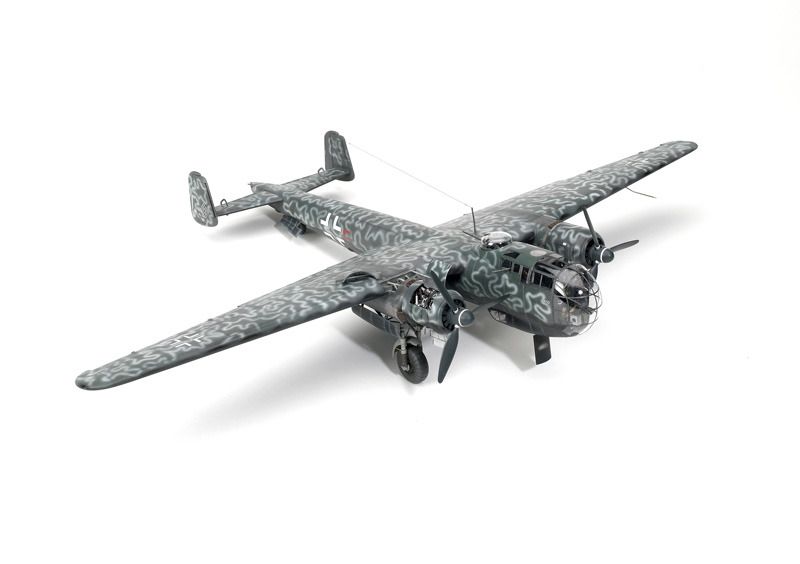
Bryan McDermott airbrushed the squiggly “wave mirror” pattern on his 1/48 scale Do 217K-2 (loosely based on the Monogram Pro Modeler kit), mixing automotive paints for RLM 76. The blend was about 95 percent thinner — and he sprayed the pattern freehand at 40 psi. (Do not try this at home.)
In the July 2015 FineScale Modeler, our “Final Details” column polled several editors here at Kalmbach Publishing Co. on their airbrushing habits — in particular, what pressure settings they customarily use, and why.
As with most airbrushing questions, this one received varied answers and differing opinions. I suspect that, when it comes to airbrushing, everyone goes as much by experience and feel as by the numbers. As skilled as the modelers may be, getting them to tell you exactly how or why they do what they do is a little like asking them to tie someone else’s tie.
Still, it's a useful and enlightening question — and, since everyone is obviously entitled to an opinion on this matter, it's time we ask you, the reader, to chime in.
So, tell us: What air pressure do you use for most airbrushing, and what psi settings do you assign to specific tasks such as pre- or post-shading, weathering, fading, etc.?
Please note:
• Whether you use acrylic paints, enamels, or lacquers
• What your usual setting is for each type of paint
• For what applications would you change those settings?
• Any personal tricks or practices involving air pressure
You may respond right here or e-mail me at mhembree@finescale.com. And, if you like, send along a high-resolution image of one of your models as an example.
If we quote you or use an image you sent, you'll see it in Final Details in the September 2015 FineScale Modeler.
We’ll need your answer by June 15. We look forward to hearing from you!